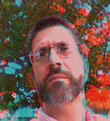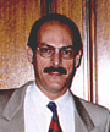This was in Sunday's Miami HeraldThunderbird drive-in soars as others go dark
BY MICHAEL A.W. OTTEY
mottey@herald.com
South Florida had almost 50 drive-in movie theaters nearly a half-century ago. It now has two. Soon it'll be down to one.
The Thunderbird Drive-In Theater -- also known as The Swap Shop Drive-In -- near Fort Lauderdale will stand as the lone survivor of an era of tail-finned cars, poodle skirts and necking.
The tri-county's only other drive-in, the Trail Drive-in Theater in Lake Worth, is closing. The owner, Bob McCain, 67, wants to retire.
But as the Trail follows in the path of other drive-ins, the Thunderbird thrives, in part because it is linked to the massive, moneymaking Swap Shop. The theater is so popular with a whole new generation of moviegoers that owner Preston Henn plans to add a 14th screen. Already billed as the largest drive-in theater in the world, the Thunderbird would top even itself.
Some view drive-ins as relics of yesteryear, but there was no such indication on a recent evening at the Thunderbird, 3291 W. Sunrise Blvd., between Interstate 95 and Florida's Turnpike. Even on a Monday night, the Thunderbird draws a respectable crowd. Every screen showing a movie had between 20 to 50 vehicles.
By Wednesday, the line of vehicles waiting to get in is steady and long. On weekends, particularly during the release of a big-draw movie, the line snakes out onto West Sunrise Boulevard.
Unlike many drive-ins, the Thunderbird shows first-run films.
Deborah Hamilton and her sister, Brenda Burgess, both of Fort Lauderdale, were among the recent crowd of car-bound moviegoers. The two chattered casually moments before the showing of Spider-Man. Both said they prefer the drive-in over the indoor megaplex because they can talk during the movie, smoke, drink alcoholic beverages, dress down and not worry about their appearance, and basically be themselves.
''You can just be relaxed,'' Hamilton said. ``You can have your privacy. It's like being at home in your own living room.''
SPREADING ITS WINGS
Burgess said with the closure of the Trail, the Thunderbird's expansion is a smart move.
''Because if this is the last drive-in, a lot more people will come,'' she said.
That's already happening, even though the Trail hasn't actually closed, said Jose Robinson, a ticket-booth staffer.
''I see a lot of them coming down from Palm Beach now,'' he said. ``I think we'll be even busier. We get a lot of tourists who come through. It's a novelty. It's quite an attraction.''
Robinson has been working the ticket booth for two years, after 17 years delivering mail for the U.S. Postal Service. In his two years at the drive-in, he's developed a friendly relationship with many of the repeat customers.
''Where's the baby?'' he asked a lone woman.
''She's with her grandmother,'' she responded.
''We see a lot of families, and a lot of people on dates,'' Robinson said. ``We can do about 2,000 cars on the weekend, which is incredible.''
UNBEATABLE PRICES
Benjamin Parra of Hollywood brings his family to the Thunderbird at least twice a month, he said. It was the third time back to see Spider-Man with his 5-year-old son, Alex, his sister-in-law, Mari Aguirre, and his mother, Elvira Parra.
''This is great,'' he said. ``You can't beat the prices. The food, the snacks, the drinks, and the tickets at the other theaters are too expensive. You gotta have $40 to $50 to take your family to the theater. The prices are crazy.''
Admission at the Thunderbird is $4 per person and children 8, and under are admitted free.
SIDESHOW ANTICS
Often at the drive-in, what's going on in the immediate area is far more interesting than what's going on the screen. The minivans, SUVs, cars, and pickup trucks drive up, folding chairs and blankets come out, fast food or home-cooked meals are served, Dad lights up a cigarette, and the space becomes home for the next two hours.
Parked next to two little old ladies are two lovers with more than the movie on their minds. No telling what's going on behind tinted windows.
''You can come here and get busy,'' Hamilton said, laughing.
A FAMILY AFFAIR
Indeed, a few couples were getting busy . It's still the thing to do, but family entertainment is the image drive-ins want to project.
That's a reversal from the 1970s, when many drive-in cinemas turned to X-rated movies in a desperate attempt to survive. Miami's Boulevard Drive-In was one such place.
Phyllis Lema, a Hollywood waitress, recalls her parents taking her to the Boulevard during its heyday. ''We used to have so much fun,'' she said. As she waited for her husband, Victor Rosario, to buy a pretzel at the Thunderbird's concession stand, Lema said she and her husband see a movie at the Thunderbird once a week.
''It's like you didn't leave home,'' Lema said. ``You're comfortable, you bring food, you wear no shoes.''
Mosquitoes can be pesky, said Yashica Peterson of Fort Lauderdale, but you can turn on the air-conditioner, roll up the windows, and you're set.
''You can sit how you want to sit,'' said Chris Teller of Dania Beach. ``If you smoke, you can smoke. Teller, who said he's at the Thunderbird once or twice a week, believes from the crowds he sees that the place is not hurting for audiences.
''This one,'' he said, ``is doing pretty damn good.''
Florida got its first drive-in cinema in 1938 and had 155 drive-ins by the time the popularity of the outdoor theaters peaked in the late 1950s.
DRIVE-IN DECLINE
When the Trail closes sometime this year, nine drive-ins are all that will remain in the Sunshine State. Television, cable TV, VCRs, home theaters, rising land costs, and changing family lifestyles combined over the years to deal drive-ins their death blow.
Some drive-ins, such as the Thunderbird, have managed to survive by operating by day as swap shops and supporting other activities.
Single-screen drive-ins are the ones that have largely suffered, Henn said, unable to compete with today's multi-screen, corporate-backed megaplexes.
Miami-Dade County, which had 25 drive-in theaters at one time, has had none for several years. The first drive-in in Florida -- the Miami Drive-In Theater in Miami -- opened on Feb. 18, 1938.
By 1954, America had more than 3,770 drive-ins.
By 1950, 20 more drive-ins opened in Florida, but by 1960, the decline in the number of drive-ins began. Currently, there are 430 drive-ins operating in the United States, according to Debrean and Randy Loy, co-executive directors of the United Drive-In Theater Owners Association. The group, based in Germantown, Md., was formed three years ago as a nonprofit business league for drive-in theater owners and managers.
The Loys and other drive-in enthusiasts maintain that drive-ins are enjoying a comeback, despite continued closures.
''We don't hold a crystal ball to look into the future,'' they said in a written response to The Herald. ``But if the current impetus of drive-in re-openings and new builds continues, drive-ins will continue to hold their own.''
According to the Loys and other sources, more than 20 drive-ins have reopened in the past 10 years, and new ones have been constructed in New York, Texas, Nebraska, Wisconsin, and Russia.
More, they say, are underway.
While Florida and Broward County can boast of having the drive-in with the most screens of any other in the world, Ohio brags about having the most drive-ins -- 38.

 Home
Home
 Products
Products
 Store
Store
 Forum
Forum
 Warehouse
Warehouse
 Contact Us
Contact Us




 Printer-friendly view of this topic
Printer-friendly view of this topic














 "County deal flops; Trail Drive-In saved"
"County deal flops; Trail Drive-In saved" 



